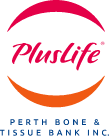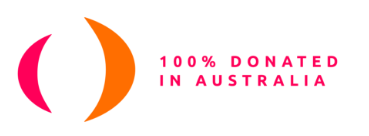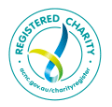PlusLife, WA’s bone and tissue bank, has welcomed four new members to its Board of Directors after its Annual General Meeting last night.
PlusLife managing director Anne Cowie said the appointments provided a wealth of knowledge and new expertise, complementing the existing leadership team.
“We welcome our new cohort of directors to the PlusLife Board and look forward to working with each of them as we enter an exciting new chapter with the opening of our state-of-the-art laboratory and research facility in Midland on 24th March,” Mrs Cowie said.
“The knowledge and networks of all of our directors will help us to provide the very best strategic initiatives to support the important, valued and life-changing work of PlusLife.”
St John Ambulance Deputy Chief Executive Anthony Smith, former DonateLife WA State Manager Hal Boronovskis, consulting project director Bart Boelen and financial planner Steven Perica have joined the PlusLife board.
The new appointees will work with retired microbiologist and philanthropist Professor John Pearman, who holds the position of Chair; and incoming Deputy Chair Graham Reynolds, who has more than 40 years’ experience working in senior executive roles in the financial sector.
Other board directors include orthopaedic sarcoma surgeon Professor Richard Carey Smith, former St John of God hospital Midland Director of Medical Services Dr Allan Pelkowitz, retired accountant Donal O’Doherty, business change consultant Gordon Webster and oral and maxillofacial surgeon Professor Andrew Smith.
Peel Health Campus chief executive officer Dr Margaret Sturdy has unfortunately resigned from the Board because of work commitments after several years of valuable contribution to PlusLife.
Mrs Cowie said PlusLife had helped improve thousands of lives through generous donations of Australian tissue. Since starting operations in 1992, PlusLife has provided 18,167 grafts to 10,084 recipients.
“We are very proud that PlusLift grafts are produced from bone and tissue donated by Australian donors to help Australian patients, and not sourced from overseas,” she said.
“We hope to be able to help many more people in the future with the opening of our new $10 million state-of-the-art facility, which includes two tissue processing cleanrooms, freezer storage, a tissue testing laboratory and a dedicated research laboratory.
“These resources mean we will be able to continue our important work managing bone and tissue donations in WA as we strive to meet growing demand for our services.”
PlusLife, which manages bone and tissue donations in WA, has two donor programs. Living patients having hip replacement surgery can donate the ball part of their hip, which is used commonly in a ground-up form for children with spinal deformities. And, like organ donation, bone, tendons and ligaments can be donated after death with consent from next-of-kin.
Grafts are used for patients undergoing life-changing operations, such as surgery to treat spinal deformities, complex joint surgery and treatments for patients with dental and facial bone loss.



